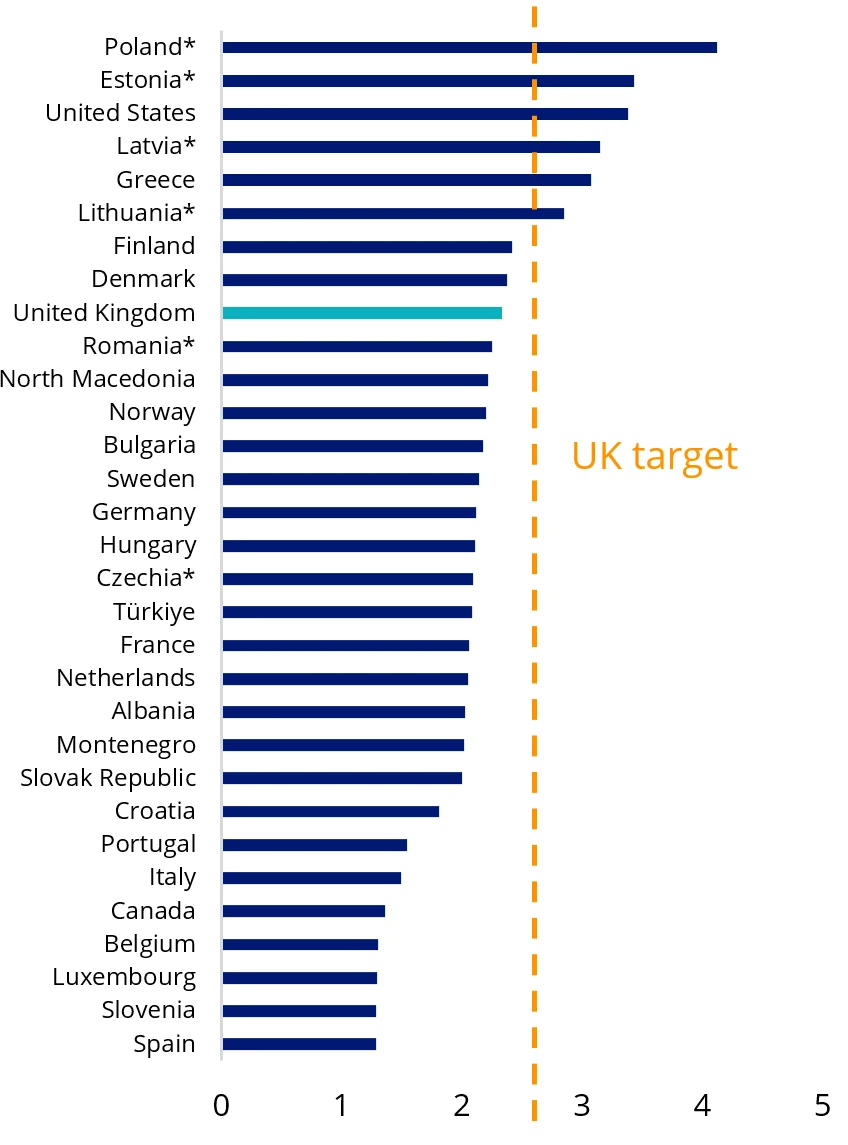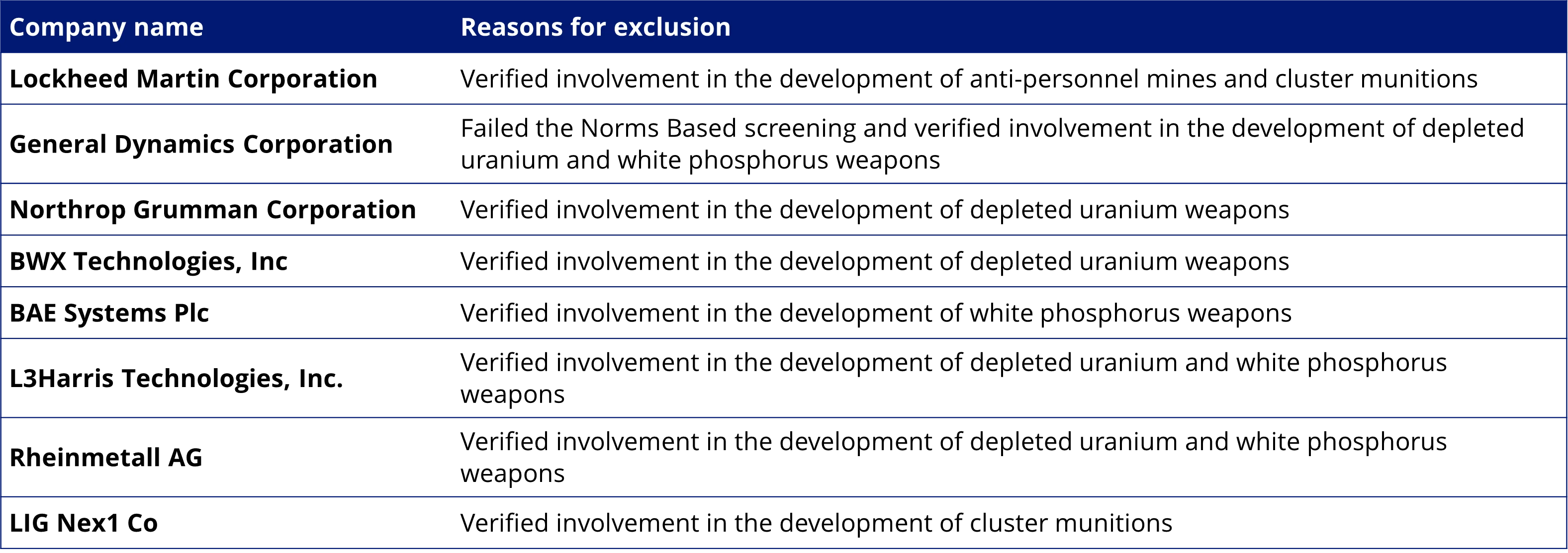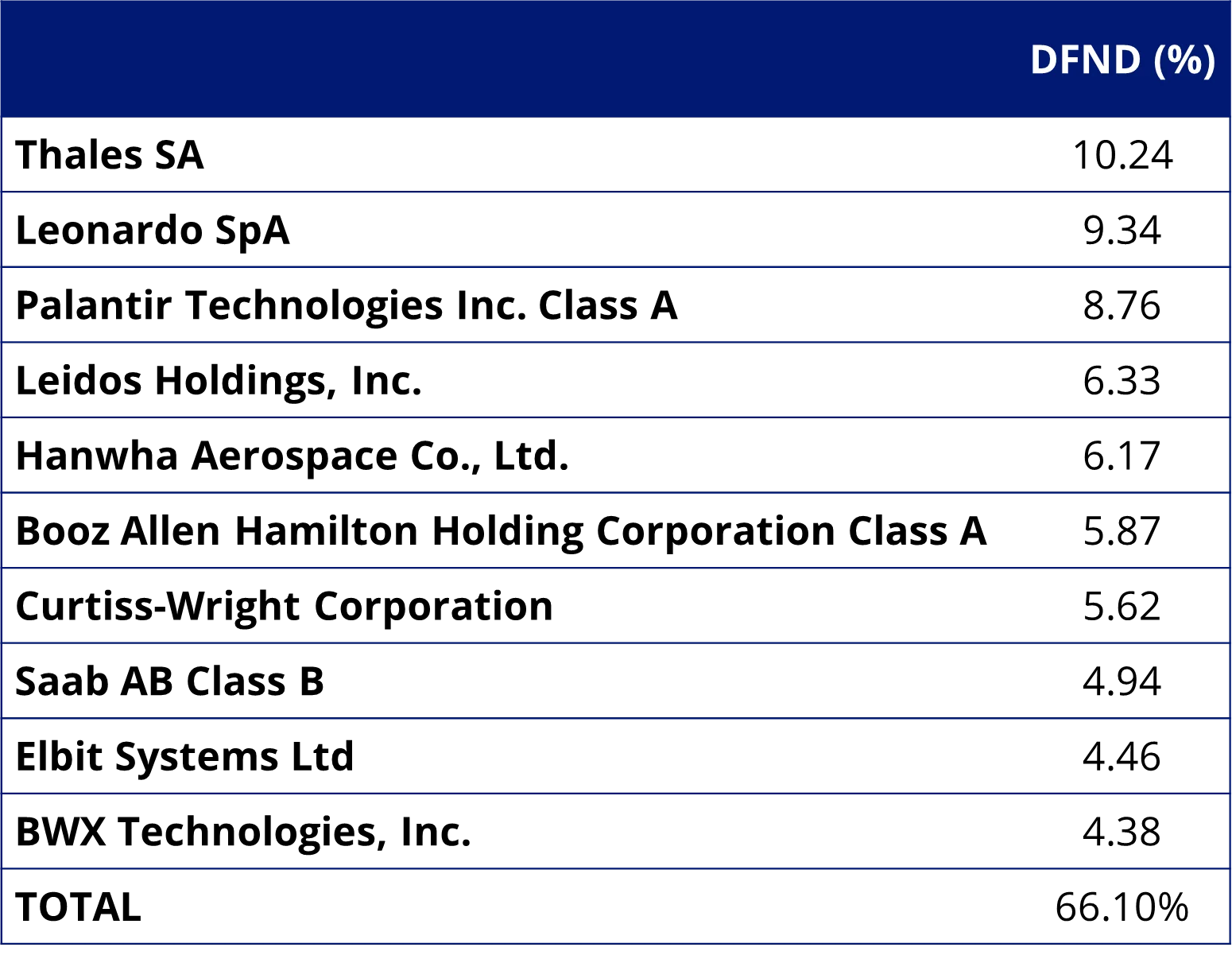Not all defence ETFs are the same
As defence spending comes to the fore, understanding the different options on ASX is paramount.
The North Atlantic Treaty Organization (NATO) has been in a precarious state since President Donald Trump returned to office and set about reversing foreign policies including some of the support being provided to Ukraine as it fights its war with Russia.
As a result, the leaders of many European countries have acknowledged the need to improve their militaries and defence networks as they can no longer, as heavily, rely on US military support and NATO spending.
European leaders agreed to boost defence spending by at least €800 billion at the recent EU defence summit in Brussels.
Following this European Union (EU) finance ministers backed a proposal to use the flexibility in the EU bloc's revised fiscal rules to spend more on defence without triggering disciplinary steps for excessive borrowing.
Defence has become a renewed focus of government spending, particularly in the Northern Hemisphere.
While the outcome of the ongoing Ukraine/Russia conflict is unknown, stability in the region remains precarious. Donald Tusk, the Prime Minister of Poland, described Europe as being in an “arms race” with Russia. “Europe as a whole is truly capable of winning any military, financial, economic confrontation with Russia – we are simply stronger,” he said.
If Ukraine and Russia do strike a deal, tensions will remain high for some time.
Further west in Europe, the UK is set to raise defence spending to 2.5% of GDP by 2027, while several other NATO allies already exceed 2%. In Germany, policymakers are discussing a €500 billion investment package to modernise infrastructure, and a new agreement exempts defence spending above 1% of GDP from debt limits, enabling further military investment. These shifts mark a new era in geopolitical priorities and defence strategies.
Chart 1: Estimated defence spending a % of GDP in 2024

* These Allies have national laws or political agreements which call for 2% of GDP or more to be spent on defence annually, consequently future estimates are expected to change accordingly. For past years Allies defence spending was based on the then available GDP data and Allies may, therefore, have met the 2% guideline when using those figures. (In 2018 and 2021, Lithuania met 2% using November 2018 and June 2021 OECD figures respectively).
Source: Nato
The UK government is also set to launch a new defence innovation unit. The unit, to be launched at June’s 2025 Spending Review, “will work with innovative firms to rapidly get cutting-edge military technology into the hands of British troops” and will “harness the ingenuity of the UK’s leading tech and manufacturing sectors.”
With so much government spending and focus, it is little wonder then, defence companies are doing well. The VanEck Global Defence ETF (DFND) which has exposure to 28 companies has returned 23.48% so far in 2025 (Source: Morningstar, from 1 January 2025 to 20 March 2025), noting that this is a short time period and that past performance is not a reliable indicator of future performance.
DFND was the first defence ETF to list on ASX, and it gives investors exposure to a portfolio of the largest global companies involved in aerospace & defence, research & consulting, application software, cyber security and electronic equipment & instruments.
It is unique from other ETFs that have subsequently been listed, and it is worthwhile understanding what makes DFND different.
DFND tracks the MarketVector Global Defence Industry (AUD) Index. To be eligible for the index constituents must earn more than 50% of their revenue from the military and defence industries. The index is also tracked by VanEck’s Defense UCITS ETF (DFNS) which has a 20-month track record listed in Europe and has generated over US$1.4 billion in assets under management.
In addition, MarketVector is a reputable and leading index provider with over US$50 billion in assets under management tracking its indices. We have a 10+ year partnership with them here in Australia and utilise them for many of our ETFs.
The most important difference that DFND’s index has, relative to peers, is that it excludes companies that violate certain business involvement criteria:
- companies that have a verified involvement in controversial weapons activities are excluded; and
- companies that violate Norms Based Research screening which are aligned with the Principles of the UN Global Compact and the OECD Guidelines for the Multinational Enterprises are excluded.
No other defence ETF listed on ASX has these exclusionary screens. While DFND does not have an ESG investment objective, nor does the Fund promote ESG outcomes we believe that a suitable investment in defence companies should satisfy certain minimum safeguards. The details of the business involvement screens are available here.
Examples of controversial weapons that are screened for are white phosphorus and depleted uranium. White phosphorus is considered controversial due to its potential use against civilians and its ability to cause severe harm to civilian populations, while depleted uranium is radioactive and poisonous. These are just two filters that establish a baseline for humanitarian considerations alongside the Norms Based screening which aligns with human rights standards.
Let’s have a look at some of the companies that DFND currently excludes:
What’s not in DFND and what is
The following companies have been screened out of DFND’s index due to the following violations and involvements.
Table 1: DFND company exclusions

As a result of its exclusions, DFND’s top 10 may be different to its peers, which could include these holdings.
Table 2: DFND’s Top 10 holdings

Source: FactSet, as at 28 February 2025
Table 3: DFND trailing performance to 20 March 2025
|
|
MTD (%) |
1 mth (%) |
3 mths (%) |
6 mths (%) |
YTD (%) |
Since inception* (%) |
| 13.26 | 14.51 | 24.34 | 42.55 | 23.48 | 45.27 |
*DFND Inception date is 10 September 2024 a copy of the factsheet is here. DFND is a newly traded fund on ASX with a short performance history and this should not be relied upon for future performance.
Source: Morningstar Direct. The table above show past performance of DFND. Results are calculated to the last business day of the month and assume immediate reinvestment of distributions. DFND results are net of management fees and other costs incurred in the fund, but before brokerage fees and bid/ask spreads incurred when investors buy/sell on the ASX. Past performance is not a reliable indicator of future performance. Click here for more details.
There is no doubt about the current appeal of defence ETFs. DFND is a portfolio of the largest global companies involved in aerospace & defence, research & consulting, application software and electronic equipment & instruments. DFND tracks the MarketVector Global Defence Industry (AUD) Index. While the Fund does not have an ESG investment objective, nor does the Fund promote ESG outcomes, the Index it tracks applies two screens to exclude companies that violate certain criteria included in the following categories: controversial weapons and Norms-Based Research.
Not all defence ETFs are the same.
For further information, you can contact us at +61 2 8038 3300.
Key risks: An investment in the ETF carries risks associated with: ASX trading time differences, financial markets generally, individual company management, industry sectors, country or sector concentration, political, regulatory and tax risks, fund operations, liquidity and tracking an index. See the PDS for more details on risk.
Published: 21 March 2025
Any views expressed are opinions of the author at the time of writing and is not a recommendation to act.
VanEck Investments Limited (ACN 146 596 116 AFSL 416755) (VanEck) is the issuer and responsible entity of all VanEck exchange traded funds (Funds) trading on the ASX. This information is general in nature and not personal advice, it does not take into account any person’s financial objectives, situation or needs. The product disclosure statement (PDS) and the target market determination (TMD) for all Funds are available at vaneck.com.au. You should consider whether or not any Fund is appropriate for you. Investments in a Fund involve risks associated with financial markets. These risks vary depending on a Fund’s investment objective. Refer to the applicable PDS and TMD for more details on risks. Investment returns and capital are not guaranteed.
MarketVector Indexes (MarketVector), is a related body corporate of VanEck Investments Limited, the responsible entity and issuer of DFND.




